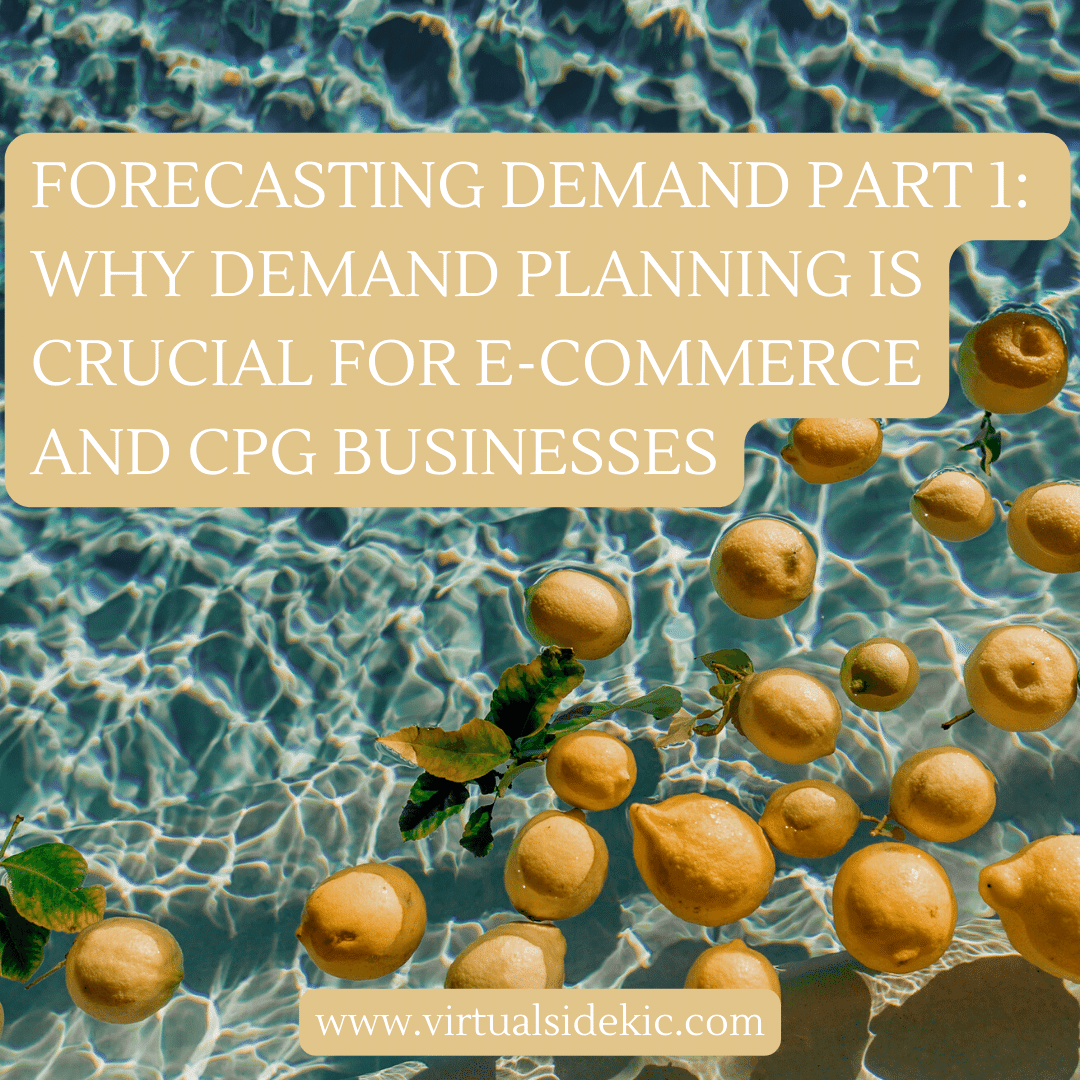Forecasting Demand Part 1: Why Demand Planning Is Crucial for E-Commerce and CPG Businesses
Forecasting demand is no easy task, but it’s one of the most important things you can do for your e-commerce or consumer packaged goods (CPG) business. You only have to look at the last two years to understand why: the global pandemic turned our world upside down. While everyone was affected differently, we all felt the supply chain disruptions in one way or another – especially business owners.
Because of all the uncertainty surrounding the supply chain and the rising costs of raw materials and shipping, businesses everywhere were (and still are!) dealing with product shortages and shipping delays. These numbers from a report by Accenture speak for themselves:
94% of Fortune 1000 companies have experienced (and continue to experience) supply chain disruptions due to COVID-19.
75% of companies have experienced negative impacts.
55% of companies plan to downgrade their growth expectations because it’s becoming increasingly difficult to keep up with customer demand due to supply chain shortages.
If recent history taught us nothing else, we certainly learned that we should expect the unexpected – and that’s exactly why demand planning and forecasting are so critical for your business.
So, let’s talk about what forecasting is (and isn’t), the fundamentals of forecasting, and how you can easily begin forecasting demand in your e-commerce or CPG business.
What Is Demand Planning?
Before explaining what demand planning is, let me first share what it isn’t. Demand planning is less about predicting the future and more about understanding the past. As we know, we can’t predict the future. What we can do is reflect on past events and try to understand how those events affected our business.
Demand planning is the process of reviewing previous years and identifying events, patterns, busy seasons, and slow seasons to help you prepare for future events. *Important note: the terms “forecasting demand” and “demand planning” are often used interchangeably.
Demand planning is important because it lets you proactively plan for unpredictable times. It’s like that old Benjamin Franklin saying: “If you fail to plan, you are planning to fail,” and I couldn’t agree more.
Although it’s impossible to know exactly what the future holds, you can still put your business in a position to overcome any challenges.
Without proper forecasting, your business runs the risk of being unable to keep up with customer demand during busier months. On the flip side, your business could run the risk of having excess inventory during slower periods (which costs you money). Both could lead to customer dissatisfaction and fewer profits. (Stay tuned for Part 2 to learn more about strategies for dealing with over- and under-forecasting.)
But when you implement demand planning and learn how to improve your forecasting accuracy, your business can navigate these peaks and valleys gracefully.
The truth is – many business owners don’t know how to forecast demand. That’s okay – I get it! That’s exactly what we’re going to dive into next.
The Fundamentals: Forecasting Demand Like a Pro
While forecasting demand takes a bit of effort and strategy, it isn’t rocket science. I promise. Here are a few fundamentals to help you forecast demand with ease, whether you own an e-commerce business or a CPG business:
Review omnichannel orders and sales to get your direct-to-consumer (DTC) numbers. This should include subscriptions and wholesale accounts, like future purchase orders, and Amazon and B2B wholesale platforms. Gathering and consolidating this data will help you identify forecast metrics.
Evaluate promotions, holidays, and marketing initiatives that typically drive customer demand.
If you have metrics from the previous year, leverage those numbers and any learnings or key takeaways.
Once you’ve forecasted, work backward through the supply chain: establish estimates and quantities, get on your co-packer’s schedule, order raw materials with enough lead time, and coordinate freight-to-end destinations using Excel and enterprise resource planning (ERP) tools.
Now that we’ve covered the basics of what forecasting is and why it’s critical to the success of your business, here are some convenient tools that can help you keep track of everything you need to forecast demand.
Tools to Help Business Owners Forecast
Forecasting accuracy is made possible with the help of software like Excel and ERP tools. And, yes, there’s a difference between the two!
If you’re wondering how to forecast with Excel, know that it can be done. Excel offers a forecasting function, but it’s mostly a manual tool that lets you compare different pieces of data and neatly display them in a line or column chart.
ERPs integrate into the systems you already use and help you easily manage day-to-day operations like sales, inventory, and production planning.
Excel is a great place to start, and many business owners succeed using this tool for demand planning. But, when it’s time to pull analytics and gather data, you definitely need an ERP. Excel is excellent for quickly comparing data that you enter manually, but an ERP collects this data over time and allows you to look at your business holistically, empowering you to make mindful business decisions and forecast more accurately.
Forecasting Demand Is Key to Your Success
Forecasting demand empowers business owners to stay one step ahead of the game and prepare for the inevitable (often unforeseen) changes in business. Whether you decide to start demand planning with Excel or you implement an ERP tool – both will help you forecast demand, improve your forecasting accuracy, and run a more streamlined, successful e-commerce and CPG business.
If you’re ready to step into full CEO mode, forecast like a true boss, and handle whatever comes your way with ease, I can help. Book a discovery call today to see how I can help you and your business thrive (and not just survive) during challenging times.

